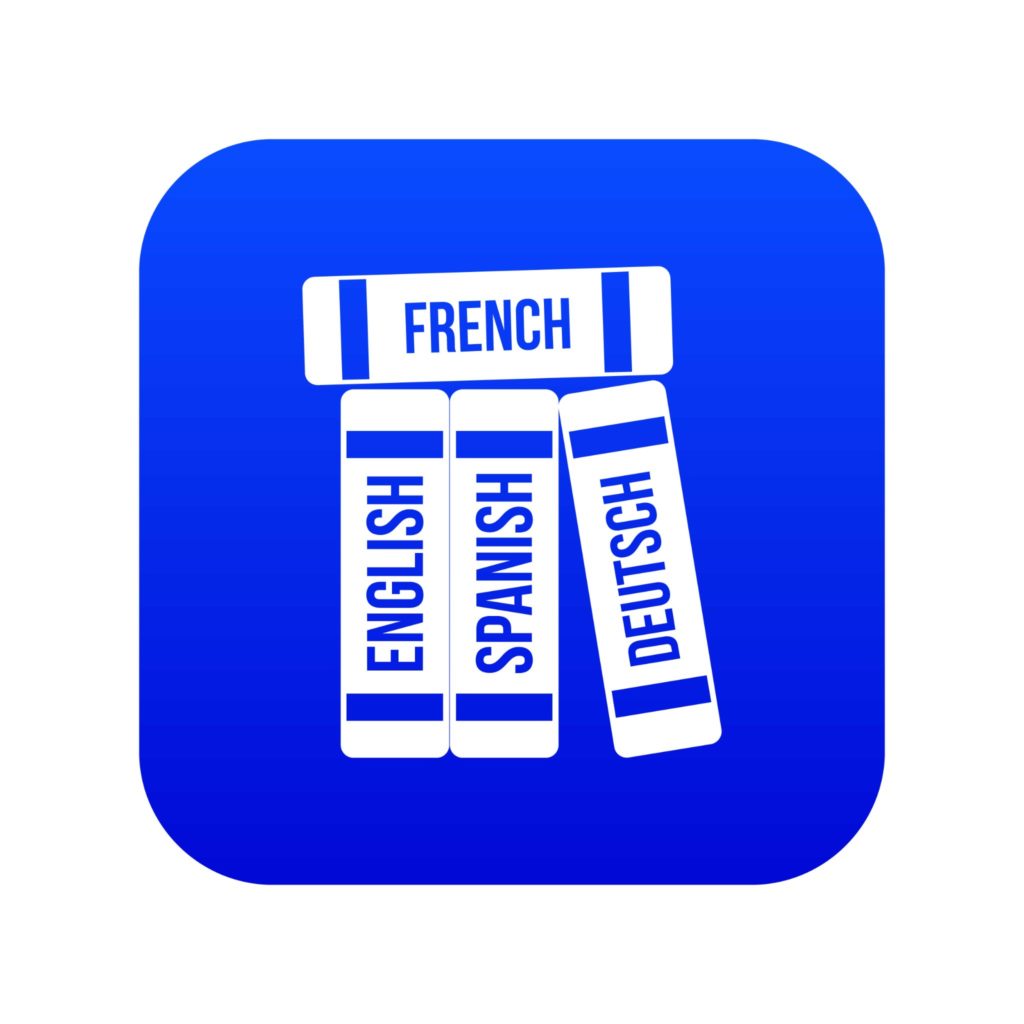Deciding to learn a new language can be a daunting commitment, especially if you don’t have an end goal in mind. Luckily for you, the German language is split into six levels, which makes it simple for you to measure your progress towards fluency.
According to the European Framework of Reference for Languages, the levels of the German language are A1, A2, B1, B2, C1, and C2. A1 is the lowest level of fluency, dealing with everyday expressions. C2 is the highest level and indicates mastery of the language.
Read on to learn more about the levels, how long each one takes to learn, and why we use this framework to measure fluency in German.
Basic Speaker: A1 and A2
Levels A1 and A2 envelop the very basics of the German language. This is the most fundamental part of the language, where you’ll learn things like greetings and introductions, as well as how to describe your daily routine.
Once you have learned all you can from these levels, you should be able to ask and answer simple personal questions, exchange direct information, and express simple needs.
You’ll be able to get through your day-to-day with this level of fluency as long as nothing comes up that surprises you. You won’t be completely comfortable with the language, though, and you may still need help when talking to a native speaker. Ask them to talk slowly and be patient as you continue to learn to express your thoughts and needs in German.
Level A1
Also called the “Breakthrough” level, level A1 is where you learn enough that you’re not just interested enough to keep a few German words in your back pocket. At this point, you’re actually learning the language. At this level, you learn to introduce yourself and to speak simply about people, places, and things.
You will also learn everyday expressions and basic phrases that will help you satisfy basic needs. At this stage, you may be able to have simple interactions with a native speaker if that person is willing to speak slowly, enunciate clearly, and offer help.
According to the German Language Academy, level A1 should take around 150 hours of lessons to learn. For a different metric, the Sprachshatz German Language School teaches this level in 8 weeks, though that’s with 20 lessons of intensive training per week (for a total of 160 lessons) and 2 hours of homework every day.
If you take it at a slower pace, it will take longer. You can find out how long by dividing 150 by the number of hours of study you’re willing to put in per week, and that will tell you how many weeks it will take you. You can do the same with days if you want to be more precise.
Keep in mind that 150 is the average number of hours, so it may take you more or less depending on how intense your study is.
Level A2
This level is called the “Waystage” level. During this level, you’ll grow more comfortable talking about your routines as you learn how to describe things that are immediately relevant to you. As a few examples, you’ll learn how to understand and use frequently used expressions about your family, employment, and local geography.
After you achieve this level of fluency, you will be able to communicate simply and directly about topics and tasks that are familiar or routine to you. You will also be able to simply describe your background, the environment around you, and your immediate needs.
Level A2 takes a similar amount of time to learn as level A1. The German Language Academy estimates 150 hours of lessons to be enough to teach you through level A2. Sparchshatz German Language School teaches it in 8 weeks (160 lessons), but they teach every level in that amount of time.
The Sparchshatz time frame is the same for every level, but the estimated hours of lessons from the German Language Academy begin to change after this level.
Intermediate Speaker: B1 and B2

Levels B1 and B2 are where you start to really understand the German language. At this point, you can get by comfortable with what you know of the language, at least in most scenarios that come up in your day-to-day life.
When you have B-level fluency, you can talk about most things you encounter in work, school, and play: anything that has a lot of relevance to your life. You will also be prepared for most situations in a German-speaking place, and you will eventually be able to hold a conversation with a native speaker without having to ask them to slow down.
Level B1
This level is also called the “Threshold,” and we’ll talk more about the threshold later. For now, it will suffice to say that this level is called the threshold because it’s the point at which you will be able to start speaking the language comfortably.
You will be able to discuss the main points of things that you regularly deal with in your work, school, and free time activities, and when you’re traveling in a place that primarily speaks German, you will be able to handle most of the situations that are likely to come up.
You will also be able to write about topics that are familiar or interesting to you in a way that others can understand, and you will be able to describe things that happen to you and things that you hope for. You will also be able to explain your reasons for things, your opinions, and your plans.
According to the German Language Academy, this level takes about 300 hours of lessons to achieve. Despite the fact that it’s right after the beginning of two levels, this is the most time estimated for any of the levels.
Level B2
Level B2 is also called the “Vantage” level, and at this level, you have an advantage over those who can only get by in the language. At this point, you will start to branch out from what was previously a language journey focused on concrete things that are immediately relevant to you.
Once you achieve this level, you will be able to understand the main ideas of complex topics, whether the subject is concrete or abstract. You will also be able to follow technical discussions on the topics that you have specialized in. You will also be able to write in detail about many different topics.
At this point, you should be able to communicate with native speakers without much difficulty at all. You will also be able to explain a viewpoint on an issue by listing the pros and cons of the possible options or solutions.
According to the German Language Academy, it will take you about 240 hours of lessons to achieve this level. You could do that in 8 weeks by spending 30 hours per week studying.
Proficient Speaker: C1 and C2
You may be fluent enough to survive, but are you fluent enough to thrive? Levels C1 and C2 are where you move past learning what you need to be able to say and start learning how to say what you want to say.
This is where you gain the ability to express yourself with spontaneity or without taking any time to pause and come up with a German version of what you want to say. You’ll be able to read complex texts and discuss them with native speakers in your own words, and you’ll be able to recognize different shades of meaning.
Level C1
Level C1 is also called “Effective Operational Proficiency” because you’re proficient enough in the language to be effective at communicating in what you do. You will be able to understand a variety of reading material, even if it’s a demanding topic, and you’ll be able to read between the lines if there is any form of hidden meaning.
You will be able to fluently express your ideas with little to no time needed to translate your thoughts into the German language and without having to pause to try to remember the expression that you want to use in that situation. You will be able to be flexible and effective in your social, academic, and professional communications.
When you write in the German language, you will be able to write clearly and with good structure and detail on even complex subjects by using the appropriate organizational patterns and devices to link ideas together.
The German Language Academy estimates this level to take 240 hours of lessons to achieve.
Level C2
“Mastery” is the name of this level because you can understand pretty much everything you read or hear with ease when you have this level of fluency. At this level, you can also summarize the information you heard or read from different sources, and you can reconstruct the arguments or stories of others in a way that your listeners can easily understand.
At the Mastery level, you can express yourself fluently and precisely without needing any time to search for the German words and expressions that you need. As soon as you think it, you can say it. You can also recognize the different, intricate meanings of words and expressions, even in complex situations.
By different meanings, I mean that you know the subtle differences between words to the point where you can decide the appropriate word to use between two synonymous words.
Like levels B2 and C1, the German Language Academy estimates that this level will take about 240 hours of learning to achieve.
Where Did the Framework Come from and Why Use It?

That all might seem like a lot, but learning a language is a lot of work. It takes time and effort, and it involves more than just learning alternative words to things. Here’s what makes this framework useful for learning German, right after we give credit to where it came from.
History
The levels listed above come from the Common European Framework of Reference for Languages, or CEFR. This framework was developed over time as a reference to use in measuring a person’s fluency in a so-called “foreign” language.
The precursors of the framework were the Threshold Level, which was developed for English in 1975, and Un Niveau Seuil, which was developed for French shortly afterward in 1976. Before the CEFR was made, these two tools were used for other languages as well, with adjustments made to fit the tool to the given language’s peculiarities.
These tools were not incredibly specific, though. The only thing these really did was to put a benchmark in place to identify the level of proficiency in the language where that person could get by in the language, speaking simply, but effectively and at an interpersonal level. As much as it is the end goal, it’s not the most helpful thing for those planning learning paths.
The CEFR was made in 2001 by the Council of Europe, expanding on previous tools by finding more benchmarks to put around the “threshold” benchmark. These benchmarks were placed immediately before and after the threshold and then broken further into the six-level scale.
Use & Benefits
Now that it’s broken into smaller, achievable pieces, learning a new language is more manageable. Teachers, textbook writers, and students alike have a system they can use when setting short-term goals in the language learning journey. Those smaller goals within the long process of learning a language make for better motivation and encouragement during the process.
Some people may complain that the CEFR is too broad to be useful, but that broadness is actually just another thing that makes it more useful by making it adaptable to the person learning the language.
Instead of giving you a list of all the words and grammar you have to know before you can be considered fluent, the CEFR adapts to you by focusing first on the language that you will need in your everyday life. You learn the parts of the language that will be of most use to you first, and you can expand after that.
